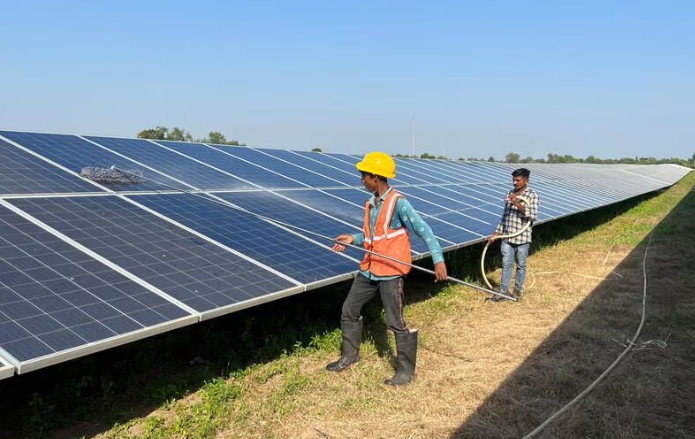
Electricity consumption peaked at a record 223 Gigawatts (GW) in June, up from a peak of 212 GW in June 2022, according to the Grid Controller of India.
Total demand met hit a record 140 billion kilowatt-hours (kWh) in June, up from 134 billion kWh in June 2022.
But the grid operated in a much more stable condition with a much closer balance between generation and load than last year.
Frequency, a proxy for the balance between generation and consumption, was below target just 6.5% of the time in June, down from 12.5% in June 2022.
Improved frequency control has sharply reduced the risk of unplanned power outages or a cascading grid failure.
Grid controllers have been able to call on much more generation from renewable sources and improved availability of fossil-fuel units.
Generation from wind farms increased by 1.5 billion kWh (+16%) while solar output was up by 1.1 billion kWh (+14%) compared with the same month in 2022.
Other generation, mostly from coal-fired units, also increased by 3.3 billion kWh (+3%) owing to improved fuel availability.
India is starting to benefit from the massive increase in renewable generation capacity installed in the last two years.
Renewables capacity has increased by 33 GW (+34%) and accounts for more than 85% of all new capacity installed since the middle of 2021.
At the same time, the government has prioritised increases in coal production and deliveries to power generators to ensure there is sufficient fuel available to maximise generation during the annual summer peak.
Domestic coal production increased by 46 million tonnes (+10%) in the first six months of 2023 compared with the same period in 2022.
The volume despatched to power plants was up by 14 million tonnes (+4%) though bigger increases were constrained by congestion on the rail network.
Improved fuel availability has ensured coal-fired units are able to start up when called on by the grid – averting the severe power shortages and blackouts that plagued the network in October 2021 and again in April 2022.